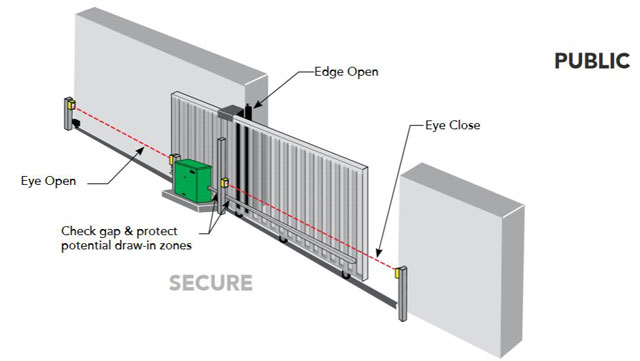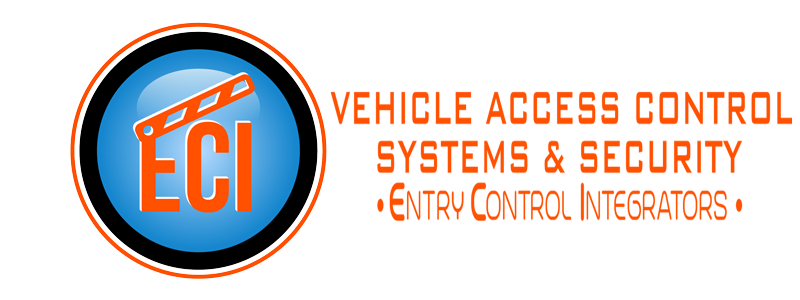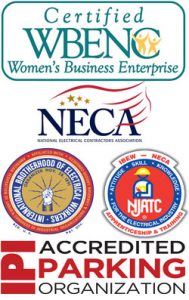
Previously I have written about gate security applications and protecting the entrapment zones three times. The most recent article focused on perimeter barrier gates. Before that I wrote on double swing gate systems and the first blog article centered on single swing gates. In this article I will write about slide gate barriers (as shown in the photo above courtesy of Nice/HySecurity) and entrapment zones on the interior or property side of the gate.
Once again, there are areas where people, especially children who may be unaware of the danger, can possibly be trapped, injured or killed. The danger occurs when the gate moves to either open or to close. These areas are called entrapment zones. Remember the gate can often be heavy, and although moving at a relatively slow speed they are very dangerous. Entrapment devices detect and then relay to the gate’s mechanical operator to stop or reverse movement of the gate.
Areas Needing Entrapment Detection Devices
Three potential areas of entrapment are shown in the diagram to have devices. They are the two areas as the gate either moves to open or close as well as the possible entrapment in the fully closed position. For the former two areas photoelectric eyes and their reflectors are used to detect any mass interfering with the photo beam and disrupting the projection. An edge sensor is seen for the latter since the gap between the gate and the wall, which is a fixed object, is greater than 2.25″. This gap is defined as a “draw-in zone”.
The main objective is to keep people safe and avoid possible liability.
We refer you to Underwriter’s Laboratory (U.L.) code UL-325 and ASTM (International) F-2200 for a more comprehensive understanding.
Note: We also caution you to consult with your legal counsel regarding liability issues surrounding your vehicle gate system(s).
All entrapment zone protection devices must be inspected and tested regularly per manufacturer’s recommendation to ensure they are in proper working order. Contact ECI at 847.949.0134 to set up regular inspection and testing of your vehicular gate barrier systems and its components. To learn more about ECI programs, please visit our Service and Preventative Maintenance page.
Click on the box below for direct contact information.


